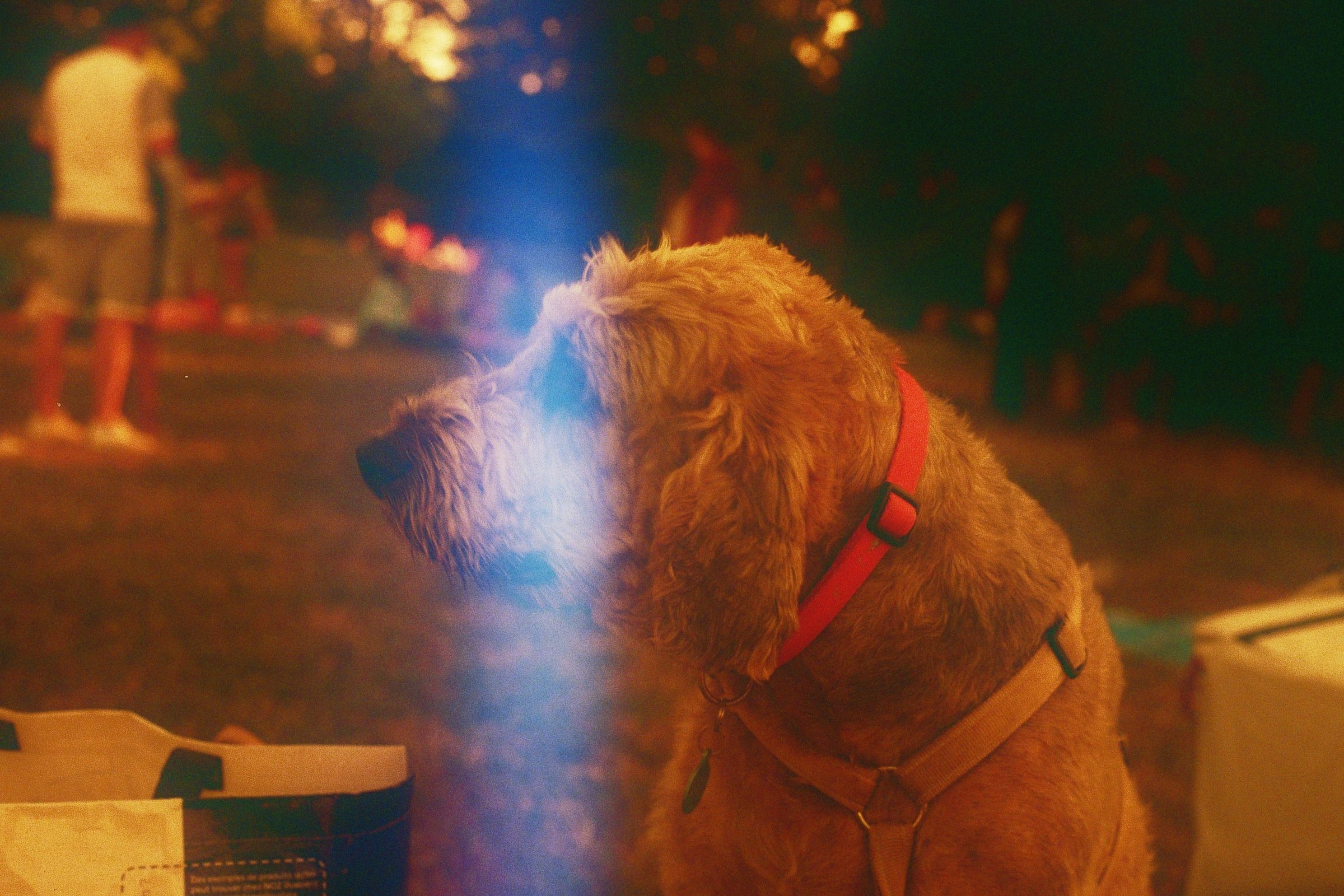Disclaimer: this is purposefully obtuse.
Other effects in the game which explicitly state they kill you:
Shadows, succubi, massive damage, death saving throws, beholder death ray (notably not even their disintegration ray kills you), power word kill, vampires, mind flayers, night hags, drow inquisitors.
Clearly, if they intended for disintegration to kill you, they’d have said so. Since specific overrides general, and there is no general rule that disintegrated creatures are dead, I rest my case. QED.
Well memed, but it’s no fun to try to argue with someone who will take everything in bad faith, even as a joke.
I disagree, I think it’s funny as long as this is all theory.
If a player was actually serious about wanting to do this as more than a meme, and was arguing this hard for it I’d be mad as hell. In this context, though? It’s fine. I think it’s amusing how hard people can stretch the rules. It’s similar to the peasant railgun. Hilarious concept. I’m still not okay with someone trying to actually use a peasant railgun.
In theory, sure. But not with OP saying “Nah-uh” to everything. There’s just no fun to be had.
And I really enjoy arguing about game mechanics, just look back at me talking about that insect swarm/animal shapes nonsense people who know nothing about the game came up with.
I’d say I’d agree but there is no stretching here, you’d have to rule that a creature that is missing every part of its body is alive. You’d also have to rule that a pile of dust has a maximum HP of more than 0, or else you’d also be dead instantly.
You’d never get a death save, your already dead.
Fine dust does not have the consistency of chunky salsa, so it checks out.
I’d like to imagine that this is how non-necromantic sapient undead creatures are created, someone has all their flesh incinerated away but somehow their soul clings to the bones, and bam sapient skeleton.
In this case it could result in a poltergeist, which uses the dust to interact with things.
Original: https://scp-wiki.wikidot.com/scp-2718
I’m just going to swing for the fences with the always objectionable, “fiction trumps rules.”
Get the feeling it would be difficult to have a dust based strength character though. Hard to hold weapons/make attacks with them as dust.
Maybe wizard?
Two-handed weapons require two hands, and one-handed weapons require a free hand to load. But you could use a one-handed weapon that you don’t have to load. Or rather, you don’t even need to do that, since no weapons are listed as being one-handed.
“As you cross the street you take 1d4 of wind damage. Please make death saves.”
“it starts misting as you are traveling”
Roll to not get washed away
Due to the failed Dex save you have been dissolved. Please make Con saves for drowning.
Just have someone carry you around in their pockets, then throw you in the enemies eyes to temporarily blind them.
Still needs an arcane focus and the spell components could be problematic. Monk maybe? (A dextrous pile of dust gently (yet masterfully!) being blown at enemies)
AI GM be like: “Yep. Seems legit.”
Probably should go join the Thousand Suns. They might set you up with some nice power armor.
Thousand Sons*
Also, pretty sure that it comes with a permanent controlling enchantment subjugating them to the next Sorcerer
If the speck of dust is sentient, then it’s not really a rubricae. The suits of armor do nothing when not controlled
Well, that’s a small problem compared to being a pile of dust without power armor.
You’re not dead when you’re petrified, either, which can lead to some pretty interesting exploits, rules-as-written.
Petrified creatures count as creatures, not objects, so rules-as-written you can determine if a statue is a petrified creature by trying to target it with a spell that requires a creature for a target.
With the cantrip Poison Spray, you can check for petrified creatures without using spell slots or risking damaging the creature, since it would be immune to poison while petrified.
If you want to go absolutely strict RAW with the creature/object distinction, resurrection spells don’t technically work. They target “a creature that died”, which, by an obnoxiously precise reading of the rules, can’t exist. After they die, they’re an object and not a valid target.
I don’t understand why they can’t just make “dead” a state a creature can be in.
I hate DMing for players smarter than me 🤬🤗
You can also safely check with Vicious mockery. The spell can target any creature, but only damages the target if it can hear, which “inanimate” things cannot.
On the other hand, Dissonant Whispers causes the target to hear (rather than hearing being a precondition as it is with Vicious Mockery) and with this you can kill petrified creatures, thus ensuring no spell casters return them to flesh-and-blood, without damaging the statue.
This is straight up horrible. LOL, party goes on a mission to obtain a cure for petrification to save a bunch of statues only to discover that they are all a bunch of corpses because the villain is just that big of an asshole.
Hope you brought your diamond dust!
This reminds me of Torchwood
Fireball
A bright streak flashes from your pointing finger to a point you choose within range then blossoms with a low roar into an explosion of flame. Each creature in a 20-foot radius sphere centered on that point must make a Dexterity saving throw. A target takes 8d6 fire damage on a failed save, or half as much damage on a successful one.
The fire spreads around corners. It ignites flammable objects in the area that aren’t being worn or carried.
At Higher Levels: When you cast this spell using a spell slot of 4th level or higher, the damage increases by 1d6 for each slot level above 3rd.
Fireball doesn’t say it kills you either. Have fun with your game where damaging spells can’t kill anyone.
Non lethal spells are actually pretty based
We’ve made their point…a person can survive fireball by making the three death saving throws. Exactly how a fine pile of ash and dust can!
I mean, the guy did roll for death saving throws
Fireball doesn’t need to say it kills you. The rules for damage, falling to 0 hit points, and failing death saving throws say that.
The rules also don’t state that being incapacitated impairs movement in any way, dropping to 0hp is stated to incapacitate you. So you can just move away at 0hp.
Obviously we have DMs who aren’t robots and will play to the spirit of the game, not the word of the rules.
The rules state that you either die or fall unconscious when you have 0 hit points. The definition of “unconscious” in Appendix A specifies that you are incapacitated AND can’t move or speak AND are unaware of your surroundings.
EDIT: Maybe I shouldn’t assume you’re talking about 5e. I have no idea about 5.5e or any other edition
Yes but in D&D you only quote the rules that support whatever bullshit you’re trying to pull.
No, dropping to 0 hit points makes you unconscious, not incapacitated. That’s an important distinction. It’s the unconscious part that impairs your movement.
Ain’t nothin’ in the RAW that states a sentient pile of dust can’t play basketball.
Dustbud ®
All new straight-to-DVD film, “Air coughing fit”
A disintegrated creature and everything it is wearing and carrying, except magic items, are reduced to a pile of fine gray dust. The creature can be restored to life only by means of a true resurrection or a wish spell.
Why would you need to be “restored to life” if you weren’t dead?
The difficulty of restoring to life someone who is already alive is why such high-level magic is required.
o7
Because you could later die. So a creature that has been disintegrated, and then later dies, can only be brought back by those means.
I thought you needed a body part to resurrect? I might be thinking Pathfinder, though cause I mostly play that.
The dust is your body, just in a different shape
You’re misreading the language. It is present-tense, not future.
I’m not misreading anything. “The creature can only…” applies a new state to the creature. After that state has been applied, or somehow reversed (unaware of any way to do this by RAW), then the creature can only be brought back to life by the means mentioned in the spell.
Yes you are. You’re intentionally abusing a weakness in English language (present and future tense are often written the same way so must be inferred by context) to assume something clearly not intended by the 2 sentences considered holistically.
It’s a funny joke. +1, but, ain’t no DM takin dis Hail Mary from a player seriously. 😂
Just playing the game RAW.
It’s like this for all TTRPGs. Someone always be tryin to game the system. 😎
It’s like this for all TTRPGs. Someone always be trying to rules lawyer away someone’s fun. 😎
Reminds me of that one barbarian subclass skill that doesn’t state when does you bonus to AC end, so you could argue (and lose) that it stay with you forever
ain’t no DM takin dis Hail Mary from a player seriously
I absolutely would, my players would need to be creative to allow this dust pile to communicate and do anything, but I’m quite sure they could manage
Same, I’m now going to try to kill a PC with disintegrate just for the occasion!
New villain is a cleaner with a feather duster +1.
I was legit imaging a pile of dust that learns telepathy to communicate with their party members and screams in an angry scotch accent to be thrown at their enemies so that their particles might sting the bastards eyes and blind them
They’d be deathly afraid of any and all cleaning staff, but also the party would have a broom and catch pan of some sort for when their buddy get a lil spilt
I bet Brennan lee mulligan would lol.
Wanna bet?
I’d make it an absolute realistic pile of dust, unable to move, unable to cast magic, fight, or anything but be carried along by whatever picked it up, and when enough of the dust gets separated, death is automatic.
But I’d still allow it as an interesting edge case once.
I’m sorry, I don’t know enough about the English language to recognise the difference. What would the phrase be in future tense?
No. He’s trolling you. No Reasonable person thinks this.
If the creature dies it can be restored to life only by means of…
If this was the intent of the rules, it would be expressed in explicit, unambiguous language. They don’t write contingency rules for possible future events that haven’t happened this way, and if you interpret rules documents this way, then everything becomes an argument.
The implication of “the creature can only be restored to life by (x)…” is present tense. It applies to the current state of the game following the events described. The language “unattended objects catch fire” in fireball doesn’t mean “unattended objects in the area of a fireball will catch fire if someone sets fire to them.” it means they catch fire.
Language in rules doesn’t ambiguously cater to a potential future state of the game that may not occur. It is describing the current state of the game, like the rules do in all other situations.
To the contrary, if it were intended to kill you it would be explicit. See all the examples I included in the OP.
The “present tense” argument doesn’t hold water when you look at how spells are worded. Let’s take a look at Alarm:
You set an alarm against intrusion…
Present tense. It describes a state change to the game world.
…Until the spell ends,…
Describes an ending to that state. We can conclude that the alarm state lasts until the spell ends.
Disintegration does not describe any such end to the changed state. We can conclude that this rider effect comes into play if the character ever dies in the future.
The “present tense” argument is that “the creature can only be restored to life” describes the current state of the creature. It’s currently possible to restore the creature to life using wish, and therefore they are currently not alive. This is a plain reading of the RAW, and it’s inconsistent with the entire cohort of the rules to claim otherwise.
If that’s not good enough for you, then it’s also the intention of “reduced to a pile of grey dust” is that players will be intelligent enough to know that dust is an object, and not a creature. There’s no statblock for the dust because objects don’t have creature stat blocks.
If THAT’S not good enough for you, it’s the intention of the rules that the players use common sense when reading them.
If THAT’S not good enough for you, Crawford has explicitly stated that if disintegrate reduces you to 0hp, you’re killed - and he wrote the rule.

If you want to play a slapstick comedy style campaign where your DM allows things to happen outside of RAW because they’re silly or fun or whatever - there’s nothing stopping you. The joy of DnD is you can play the game however you like, so long as your group are happy with that.
Nothing says you become an object. Compare to True Polymorph, which has a section for turning a creature into an object.
It’s assumed that the player is clever enough to know that dust is an object, as the player’s brain is assumed to not be made of dust.
I’m not looking for assumptions, I’m looking for RAW. I don’t know about you but at my table we play by the rules.
But… how do you kill that which has no life?
You sell it contaminated e-girl bath water
It’s DND, usually a good thwacking or else some holy damage.
Undeath?
I mean, from your characters perspective, death is preferable to being transmuted to dust, especially in a setting with a well established afterlife.
Unless the character expects to end up in some kind of hell …
Hey, you don’t know my character. He’s making the best of his fine dusty life.
He’s certainly got grit.
I tip my cap.













